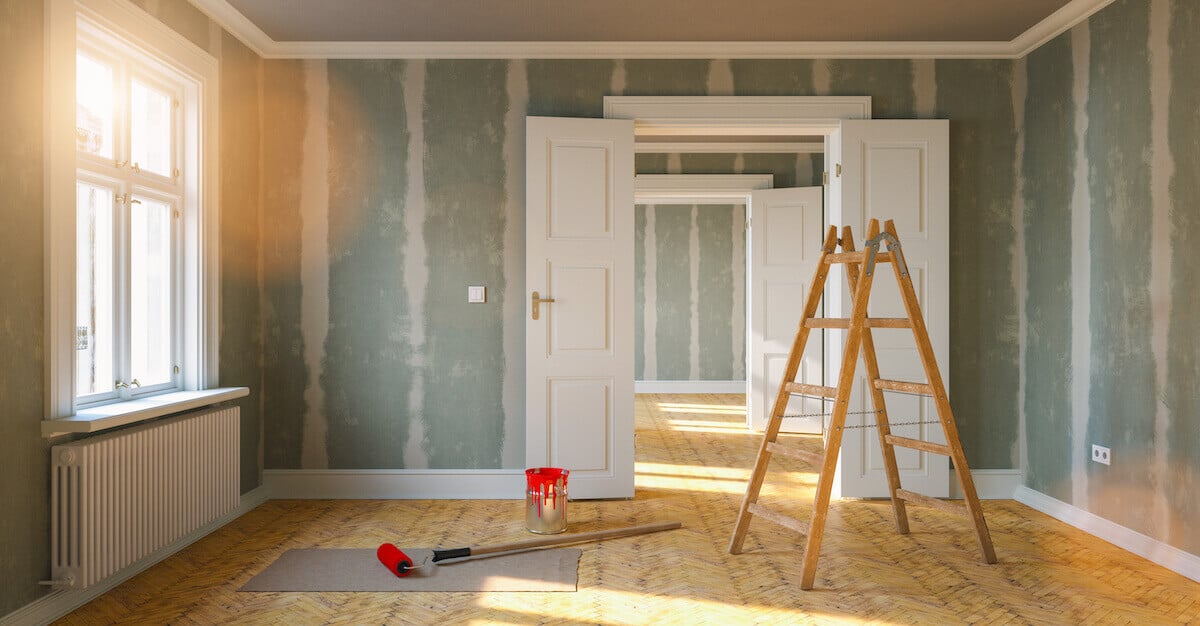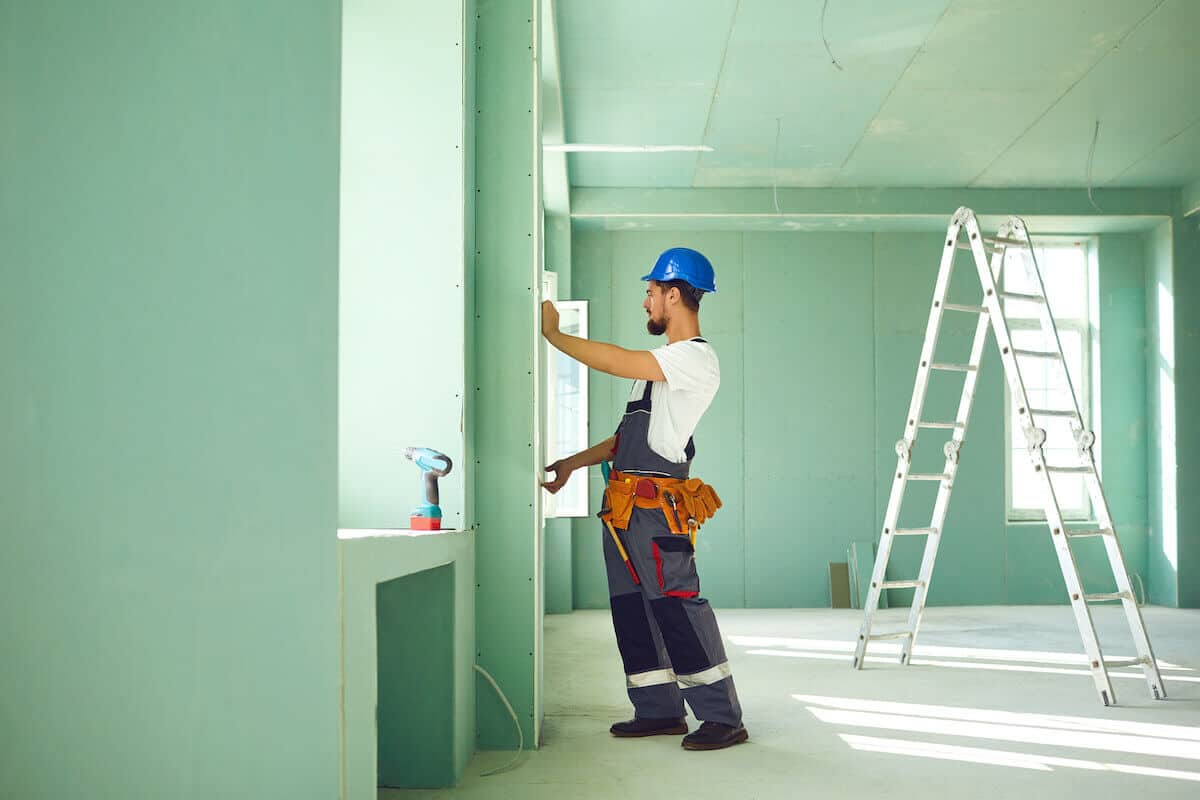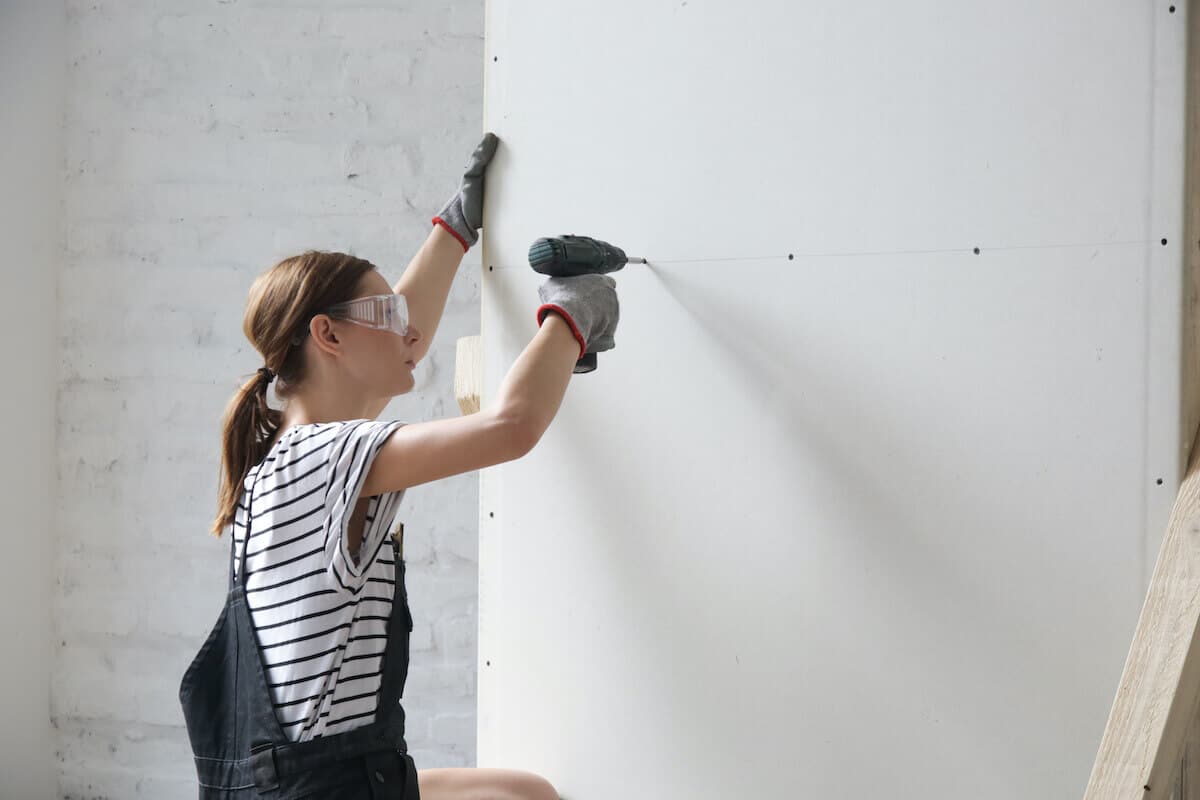Plaster Vs. Drywall: Which One is For You?
Constructing a brand-new home or making renovations to your current place is a complex process. You have dozens of big decisions and thousands of tiny, yet still crucial, choices to make. Deciding between plaster walls or drywall is one of those significant options you’ll encounter early on.
Unlike some of the choices you’ll make, the selection of drywall vs plaster doesn’t always have an obvious answer. There are pros and cons to each of them that make them both excellent material for individual projects.
The key to finding the best home improvement option for your needs lies in two major elements. You must understand the strengths and weaknesses of each of these materials. Then you have to be honest with yourself about your own DIY abilities.
To get you on the fast track to your final decision, here is everything you need to know about the plasterwork vs drywall debate.
1. The Many Uses of Plaster and Drywall
If this is your first foray into the world of home improvement, you may think drywall and plasterboard are interchangeable. Or you may not know anything about them at all, and that’s fine, too!
Before you get involved in your project, learn what each is made of and the best uses for them.
Plasterwork and drywall are two of the most popular methods used for the construction of interior walls. Even though they’re neck and neck in popularity — they’re not the same thing.
Plaster and Drywall, Defined
Historically, plasterboard is a traditional favorite. For millennia it has served to create everything from homes to fine art. The plaster of the Greek and Egyptian eras of long ago came from materials like lime stucco, clay, and sand.
Today, the commercial-grade plaster comes from a material called gypsum. It’s easier to mine and develop in high quantities, and simple for people to use for construction purposes.
In the plastering process, you apply a coat of plaster to a slat called lath. After the wet plaster dries, another two coats are applied, left to dry in between applications.
On the other hand, the drywall may look like the finalized plaster, but it goes up differently. Drywall also comes from gypsum, but this version has already been mixed with water and solidified.
The manufacturers of drywall mix the gypsum and water to form a thick substance. While that substance is still wet, it is pressed tightly between two layers of paper and left to dry. Once the gypsum board dries, it gets cut down to size for immediate construction use.
With these descriptions, it’s easy to see why many installers prefer drywall. Yet there are some situations where lath and plaster are the materials of choice.
2. The Pros and Cons You Need to Think About
Between drywall vs plaster, there’s not really a wrong answer, but there is a better one for what you need. Standard drywall is usually the preferred method when the job is simple, and time and money are considerations. You typically see plaster in more complex jobs or old houses.
Plaster Pros and Cons
Plaster is the material of choice when you need a harder surface that lasts a long time. In fact, some older houses made with original plaster walls have stood for centuries.
The downfall of plaster is that it is more difficult to use. You have to mix it, apply the coats, and allow them to dry. Then those steps need repeating — twice. This makes projects that use coats of plaster very time-consuming.
But if time isn’t a concern to you, choosing plaster allows you to make more detailed walls. You can shape and mold it, whereas the drywall is flat. Because of this, you’ll see plaster in fancier homes.
Plaster is also more substantial, so if you need soundproofing, it’s the way to go.
If this sounds like what you have been looking for, make sure you’re aware of the drawbacks of using plaster.
Since it’s more challenging to work with, labor is going to be more expensive. It’s not the first choice for people who have never used it before and are working on a DIY job.
The solidity that comes with plaster is great, but it makes it difficult to hang anything on the wall.
And if a part of the wall breaks? The repairs are going to be expensive!
Still, plaster has a lot of advantages, especially if you want a unique outcome.
Drywall Pros and Cons
Chances are, most of the homes you’ve been in have had walls made of sheetrock drywall. It’s easier to use, making it less expensive to buy, install, and repair.
It’s also relatively fire-resistant because gypsum is not flammable, and water is the primary mixing agent.
Drywall panels are an excellent choice for someone trying to put up a wall for the first time. You don’t need a lot of experience to get the job done correctly. It might take a little practice, but you’ll catch on fast.
Since it’s not quite as solid, drywall is the better option for people who want to decorate their walls. It also insulates the home better, making it the eco-friendly, energy-efficient choice.
With those pros, it sounds like drywall is surefire winner, right?
Well, there are some disadvantages to building walls with this material.
For starters, it’s not malleable like plaster. You get a straight, smooth sheet. That’s it. You can’t really bend it, and you can’t texture it like it’s competition.
When it comes to building high walls, standard drywall is difficult to lift, too. It’s heavy and bulky, so it’s too cumbersome for one person.
And the Right Material for the Job Is …
If the pros and cons leave you still lost on which route to take, look at the expert recommendations.
In general, if you want a faster, cheaper, and easier wall put up — go with drywall panels. If you plan on hanging anything on your walls, this is the option for you, too.
If you have an older home that you’re repairing or adding to, plaster is probably the better choice. This way, everything remains consistent and cohesive. Plaster is also better if you want a higher-end look or curves, texture, and design in your walls.
3. What’s Involved in Hanging Drywall?
A DIY drywall project can be a fun way to get your feet wet in the world of home improvement. Before you get started, make sure you have all the equipment to take the job from start to finish.
The building materials required will depend on the construction involved, but you’ll most likely need:
Yes, hanging drywall is the easier of the two methods. That doesn’t mean it’s easy. Make sure you spend some time doing your research and watching the job done a few times before you hitch up your pants and start your own work.
If you can, ask someone who has previously installed drywall walls to walk you through it or help you. You’ll need to prepare to deal with electrical wires, cutting out sections of the drywall for outlets, and other tricky tasks.
Check out a few professional step-by-step articles or YouTube videos to be sure you know what you’re getting into before you start.
4. What Will You Be Dealing With Choosing Plaster Walls?
As with drywall, you’ll want to plan ahead before you get started. This starts with the tools necessary to work with lath and plaster. You won’t need as many heavy-duty building materials, but plastering is a messy project!
You can expect to need materials such as:
Since you’re working with materials made of tiny floating particles, it’s also a good idea to get a face mask for yourself.
Building a wall from plaster and lath is different than covering an existing wall with a coat of plaster. Make sure when you research the steps to this job, you find professional sources that guide you from the right starting point.
Again, look to the experts to show you what you’re getting involved in before you invest time and money in the job. You might decide drywall is the better option or that hiring someone is money well spent!
Now that you’ve got your fresh walls up, check out How to Add Fixing Wallpaper Bubbles to Your List of Skills.
5. What to Do After You Make Your Decision
You’ve done your background research and delved into the reality of wall construction. Now that you’ve decided on plaster vs drywall, the final choice is whether you’re going to do the work yourself or hire an installer.
If you’re not intimidated and feel ready to jump into the labor-intensive job, here are some DIY sources to guide you:
- Drywall tips for before you start the job
- Step-by-step instructions on hanging drywall
- Common drywall installation mistakes to avoid
- Tips to know before you start to use plaster
- How to plaster a wall in simple terms
- Plaster mistakes everyone makes and how to avoid them
Should you decide to go the professional route, there is nothing wrong with that, either! Your walls need to be strong enough to support your entire house. Saving a few dollars at the front, only to spend them and then some on repairs later isn’t a savvy financial idea.
You’ll be able to find reputable professional drywall and plaster installers in your area with a Google search. But if you want to check their ratings, use sites where previous customers can comment on their contracting experiences, like:
Of course, there are always the tried and true methods of a quick Google or Facebook review search, but those are generalized. These five sites have sections specific to homeowners and contracting.
Many of these contractors use customer reviews as their main form of marketing. If you find a company that has quite a few recommendations mixed with a warning or two, they’re probably a safe bet. No one can please everyone, after all.
But consider companies with just a few positive reviews mixed with mostly negative comments to be a red flag. Stay away from those contractors as much as possible.
Related: 5 Quick Fixes That’ll Make Your Furniture Look Brand New.
Conclusion
Our world is full of incredible choices: Chocolate or vanilla, Netflix or Hulu, rent or own, plaster or drywall. The list goes on and on.
Some choices are easier than others, and if you have to decide between plaster or drywall, an informed decision is necessary. Each material has its pros and cons, as does choosing to do the labor-intensive work yourself versus hiring it out to an installer.
Both coats of plaster and drywall panels have their preferred uses. So your decision likely hinges on the reason you need the work in the first place.
Now that you know the strengths and weaknesses of these home improvement projects and what hanging them requires, the choice comes down to you.
Do you feel comfortable with your sanding, taping, and hanging abilities? Are you ready to invest the time and money in building your own wall? Or is the cost of hiring the job out worth the stress you’ll save?
You may have settled the plaster vs drywall debate in your home, but getting it put up is a whole different ballgame!


